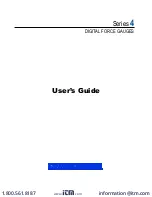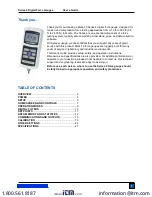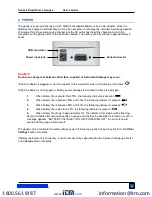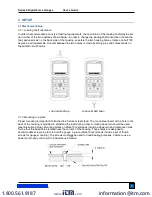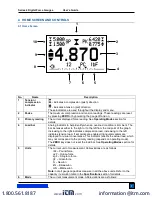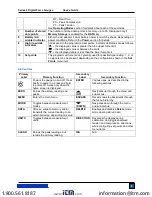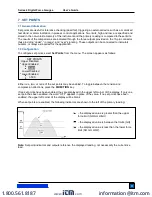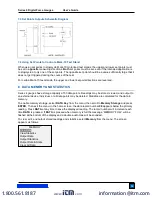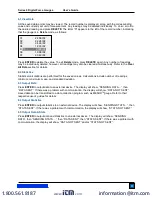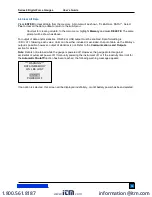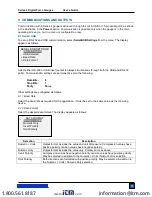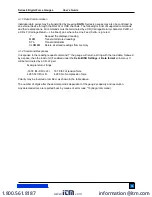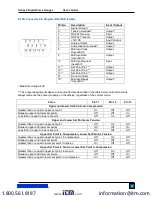
Series 4 Digital Force Gauges
User’s Guide
2
1 OVERVIEW
1.1 List of included items
Qty.
Part No.
Description
M4-012 –
M4-20
M4-50 –
M4-100
M4-200 –
M4-500
1
12-1049
12-1049
12-1049
Carrying Case
1
AC1030 /
AC1031 /
AC1032
AC1030 /
AC1031 /
AC1032
AC1030 /
AC1031 /
AC1032
AC adapter body with US, EU, or UK prong
1
08-1026
08-1026
08-1026
Battery (inside the gauge)
1
G1024
G1024
G1031
Extension rod
1
G1026
G1026
G1033
Cone
1
G1025
G1025
G1032
Chisel
1
G1027
G1027
G1034
V-groove
1
G1029
G1029
G1036
Flat
1
G1028
G1038
G1035
Hook
1
N/A
G1039
G1037
Coupling
1
-
Certificate of calibration
1
09-1165
USB cable
-
USB driver, MESUR
®
Lite software, MESUR
®
gauge evaluation software, User’s Guide
1.2 Safety / Proper Usage
Caution!
Note the force gauge’s capacity before use and ensure that the capacity is not exceeded.
Producing a force greater than 200% of the gauge’s capacity can damage the internal load cell. An
overload can occur whether the gauge is powered on or off.
Typical materials suitable for testing include many manufactured items, such as springs, electronic
components, fasteners, caps, films, mechanical assemblies, and many others. Items that should not be
used with the gauge include potentially flammable substances or products, items that can shatter in an
unsafe manner, and any other components that can present an exceedingly hazardous situation when
acted upon by a force.
The following safety checks and procedures should be performed before and during operation:
1.
Never operate the gauge if there is any visible damage to the AC adapter or the gauge itself.
2.
Ensure that the gauge is kept away from water or any other electrically conductive liquids at all
times.
3.
The gauge should be serviced by a trained technician only. AC power must be disconnected and
the gauge must be powered off before the housing is opened.
4.
Always consider the characteristics of the sample being tested before initiating a test. A risk
assessment should be carried out beforehand to ensure that all safety measures have been addressed and
implemented.
5.
Wear eye and face protection when testing, especially when testing brittle samples that have the
potential to shatter under force. Be aware of the dangers posed by potential energy that can accumulate in
the sample during testing. Extra bodily protection should be worn if a destructive failure of a test sample is
possible.
6.
In certain applications, such as the testing of brittle samples that can shatter, or other applications
that could lead to a hazardous situation, it is strongly recommended that a machine guarding system be
employed to protect the operator and others in the vicinity from shards or debris.
7.
When the gauge is not in use, ensure that the power is turned off.
www.
.com
information@itm.com
1.800.561.8187

